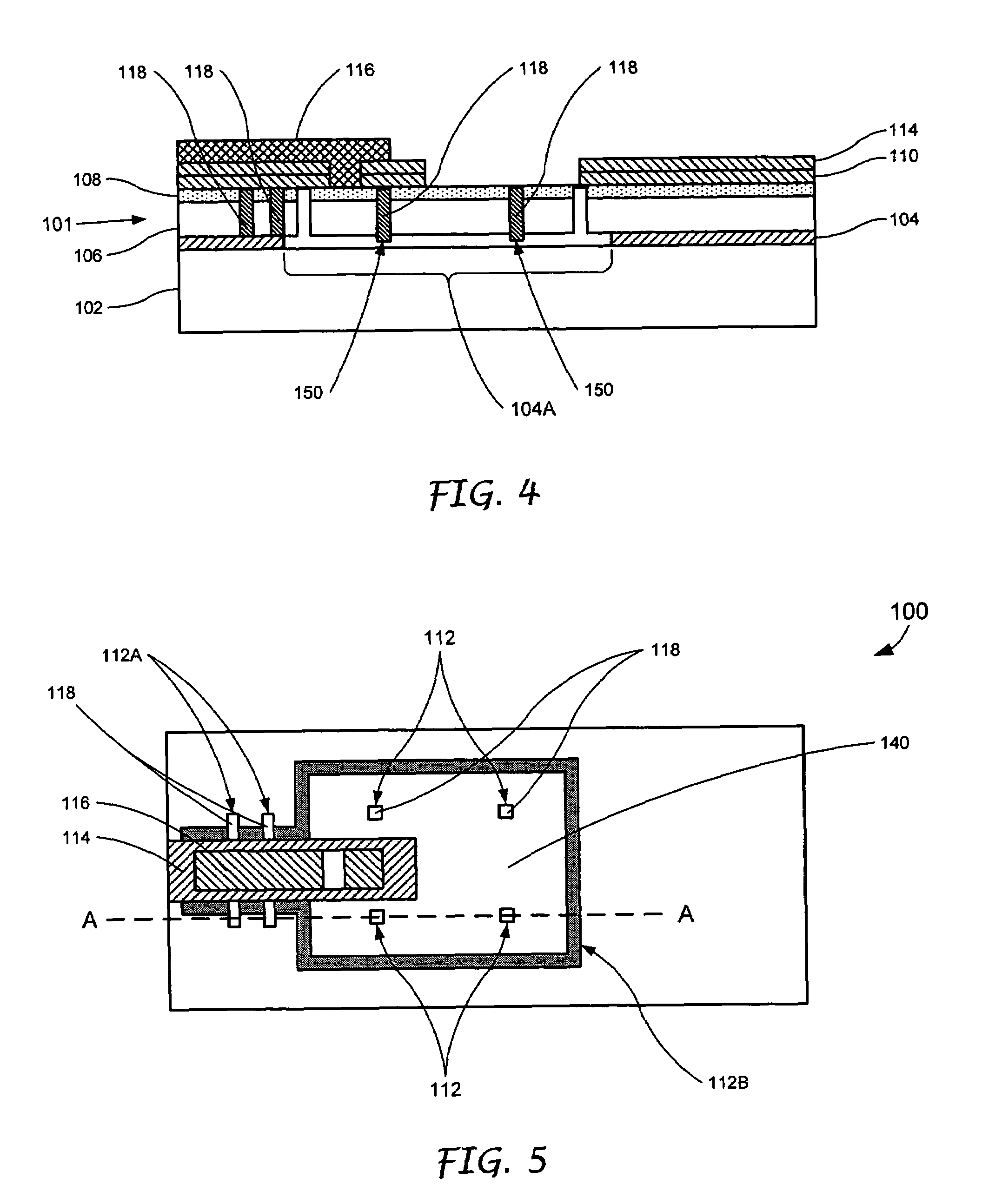Method for forming anti-stiction bumps on a micro-electro mechanical structure
a micro-electro mechanical structure and anti-stiction technology, applied in the direction of microstructural technology, microstructure devices, electric devices, etc., can solve the problems of in-use stiction, less capable and versatile processes, and more difficult problems to address
- Summary
- Abstract
- Description
- Claims
- Application Information
AI Technical Summary
Benefits of technology
Problems solved by technology
Method used
Image
Examples
Embodiment Construction
[0014]According to one embodiment of the present invention, a micro-electro mechanical (MEM) device is fabricated from a silicon-on-insulator (SOI) wafer, which includes a support substrate, e.g., a single-crystal silicon substrate, bonded to a single-crystal semiconductor layer via an insulator layer, e.g., an oxide layer. One or more trenches (holes) are etched, e.g., with a deep reactive ion etch (DRIE), through a defined movable structure of the MEM device until the holes reach the oxide interface of the SOI wafer. A dry or wet oxide etch is then performed to partially remove the oxide underneath the holes. Next, a conformal film, such as a polysilicon, is used to fill the holes, including the region at the bottom of the holes, where the oxide was removed. A remainder of the oxide layer, underneath the defined movable structure, is removed during an undercut step to free the movable structure. As such, the conformal film, which extends below a lower surface of the movable struct...
PUM
 Login to View More
Login to View More Abstract
Description
Claims
Application Information
 Login to View More
Login to View More - R&D
- Intellectual Property
- Life Sciences
- Materials
- Tech Scout
- Unparalleled Data Quality
- Higher Quality Content
- 60% Fewer Hallucinations
Browse by: Latest US Patents, China's latest patents, Technical Efficacy Thesaurus, Application Domain, Technology Topic, Popular Technical Reports.
© 2025 PatSnap. All rights reserved.Legal|Privacy policy|Modern Slavery Act Transparency Statement|Sitemap|About US| Contact US: help@patsnap.com



